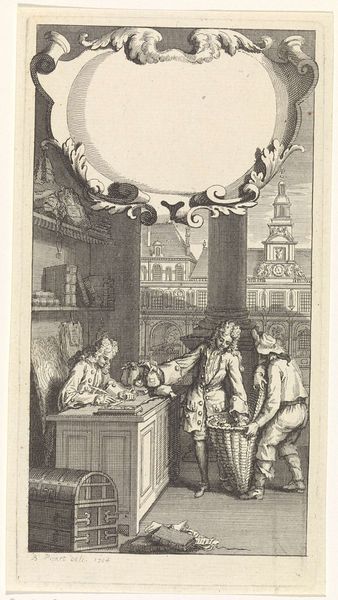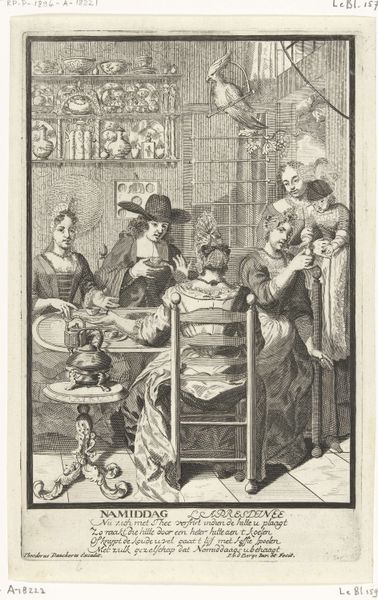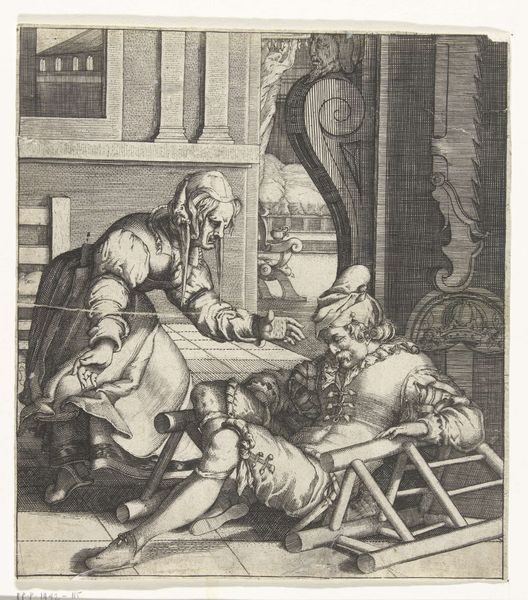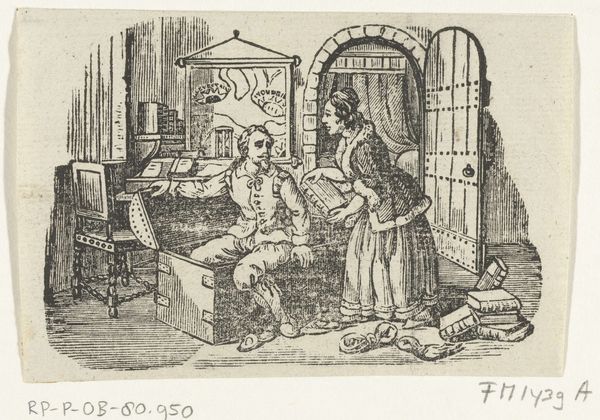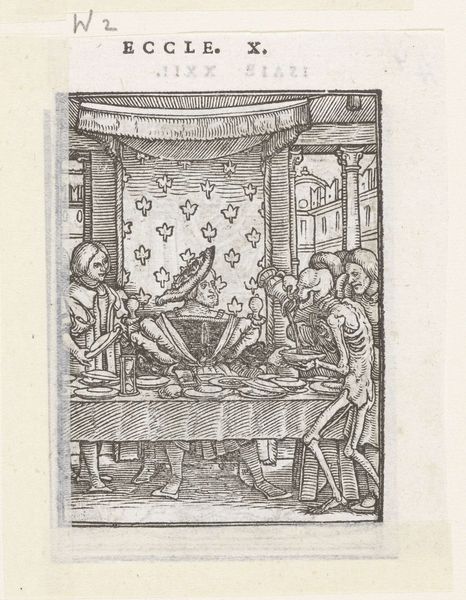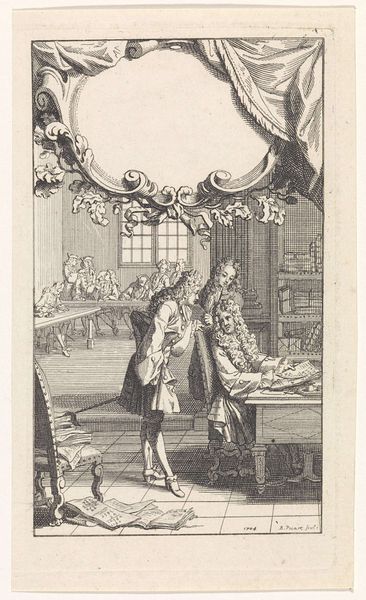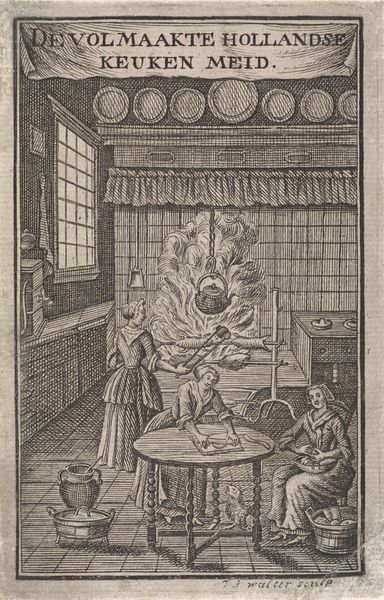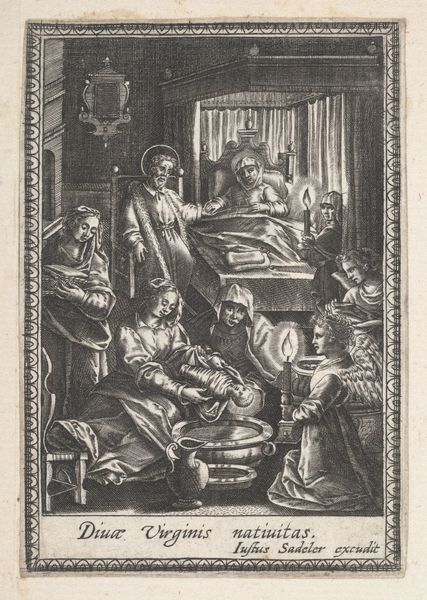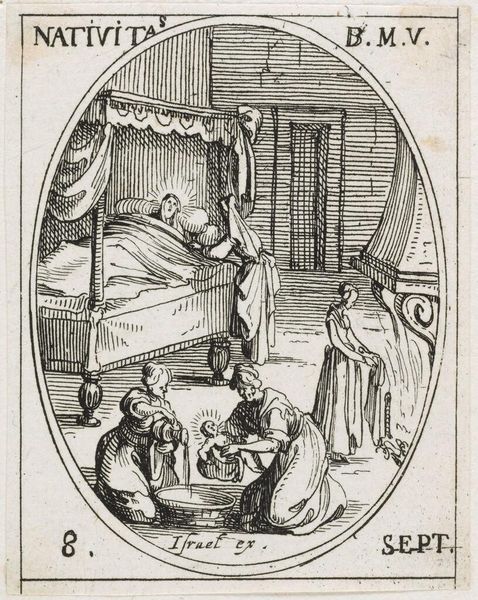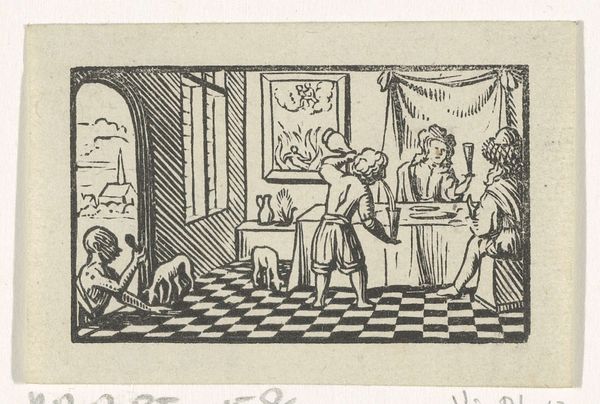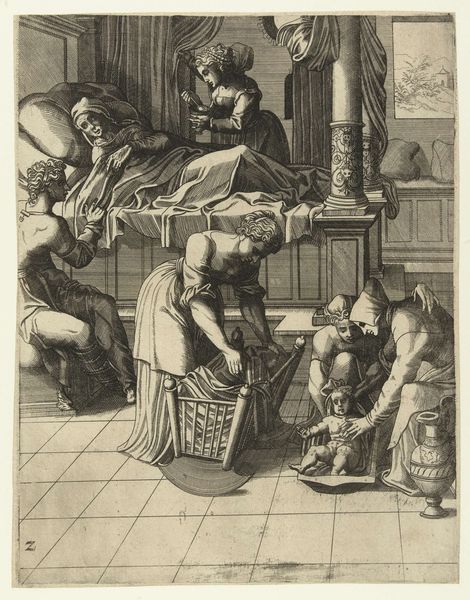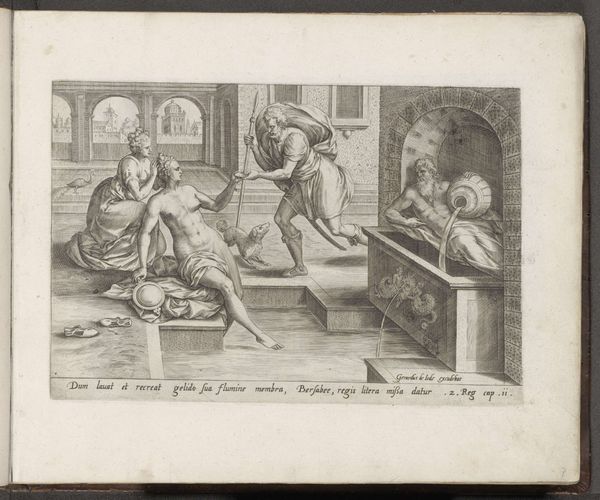
print, engraving
#
portrait
#
baroque
#
dutch-golden-age
# print
#
figuration
#
line
#
genre-painting
#
history-painting
#
engraving
#
realism
Dimensions: height 150 mm, width 90 mm
Copyright: Rijks Museum: Open Domain
Curator: This 1671 engraving, "Reinier de Graaf tijdens een anatomische les," now housed in the Rijksmuseum, presents a striking scene. What’s your initial impression? Editor: It's quite macabre. The composition immediately directs your gaze to the dissected body on the table. It's unflinching in its depiction, and almost theatrical. Curator: Precisely. G. Wingendorp created this image, placing de Graaf at the center, surrounded by onlookers. The engraving captures not just a medical scene, but the burgeoning scientific spirit of the Dutch Golden Age. What visual cues tell us about this “spirit”? Editor: Well, you've got the archway framing the whole composition like a stage. Then the opulent room with its checkered floor and the chandelier, and the glimpse of a grand canopied bed – all suggesting status, wealth and the scientific advances of the elite. Even the dog and dead game point to a very affluent lifestyle, subtly hinting at the resources available to pursue such scientific explorations. It’s about asserting a specific power, right? Curator: Power and knowledge. But let’s consider what's being dissected. The full title tells us, it is "De Succo Pancreatico." Meaning concerning pancreatic juices. De Graaf advanced our understanding of the pancreas, and here, he's demonstrating his discoveries. The tools he is holding hint at scientific breakthroughs. Editor: Yes, the image really exemplifies the scientific revolution playing out in a very public way. We’re meant to admire de Graaf’s mastery, the confidence, as if anatomy itself is another form of conquest and colonization. Curator: I see your point about the parallels with conquest. I see the print speaking about de Graaf, his place, the progress, the knowledge. Editor: I agree it highlights knowledge production. It just simultaneously reveals how scientific authority in this era was deeply intertwined with societal structures, which determined whose bodies were examined, and who got to witness it. Curator: Indeed, a complex interplay. It definitely provides much to unpack about science, power and society in 17th century Netherlands. Editor: Yes, more than just guts; a cultural dissection.
Comments
No comments
Be the first to comment and join the conversation on the ultimate creative platform.
